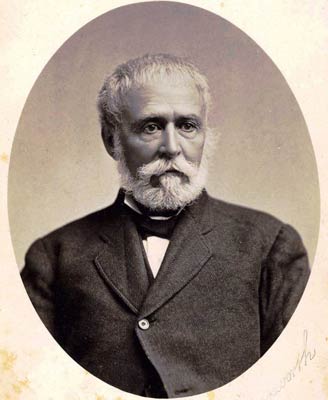John Talbot and Santa Barbara
John Theodore Talbot Aided Fremont During the American-Mexican War of 1846
John Theodore Talbot first came to California as a member of John C. Fremont’s second exploratory expedition into the American West, then made a return visit as part of Fremont’s third expedition in 1846. When war broke out between the U.S. and Mexico in May of that year, Talbot and his compatriots soon found themselves embroiled in the midst of the hostilities.
By September, it appeared that Alta California had been lost by the Mexicans to the Americans. Robert Stockton, the American commander in California, now prepared to invade Mexico proper. He left a small garrison in Los Angeles and ordered Fremont, now under his command, to join him in Monterey. On his way north from Los Angeles, Fremont left Talbot and all of nine men to garrison Santa Barbara.
Local feelings toward the garrison appear to have been mixed. While some were openly hostile, others adopted, at the very least, a “wait and see” attitude. For years, California had been virtually independent from Mexico so, in some quarters, loyalty to the Mexican Republic was lukewarm at best.

Events in Los Angeles soon transformed the situation in Santa Barbara. The U.S. garrison in Los Angeles, under the command of Archibald Gillespie, showed nothing but contempt for the townspeople. Tensions rose until open revolt broke out on September 23. Badly outnumbered, Gillespie and his men held out for five days before surrendering.
Gillespie did manage to send an urgent plea to Stockton in Monterey for help. The courier stopped off in Santa Barbara to let Talbot know what was going on to the south. In the ensuing days, rumors filtered into town, which kept Talbot informed of events, while at the same time increasing tensions between locals and the American occupying force. After Gillespie’s surrender, a force of about 200 under the command of Manuel Garfias moved to retake Santa Barbara. Setting up camp just outside town, Garfias demanded the Americans’ surrender with the promise of parole and a safe conduct. They were given two hours to reply.
It was a difficult decision. The Americans were hopelessly outnumbered and the populace was growing ever more hostile. After consulting his men, Talbot decided to make a run for it. Grabbing up some meager rations, they headed on foot up into Mission Canyon, with the hope of hiding out in the hills above town until relief arrived.
Garfias apparently took his time organizing a pursuit and then had difficulty pinpointing the Americans’ position. After a few days, lack of food had become the Americans’ major concern. They dared to make a number of nocturnal forays into town for supplies, but all they captured was one underfed white horse, which they slaughtered and consumed.
After eight days, the Californios finally located the American camp and launched an attack. They were driven back under fire with the loss of one horse. Garfias then sent another emissary, again demanding surrender with the promise of parole. Encouraged by their successful defense, Talbot again turned him down.
The Californios now attempted to burn out the Americans. Talbot soon realized their position was untenable. Who knew if and when rescuers would arrive? The group decided to try to join Fremont in Monterey. Slipping away, they trudged over the Santa Ynez Range and dropped down into the valley. At Rancho San Marcos, they secured supplies and a guide who led them to the Tulare area. A month later they staggered into Monterey. Talbot later wrote of his ordeal, “I suffered more from downright starvation, cold, nakedness, and every sort of privation than in any trip I have yet had to make, and I have had some rough ones.”
Fremont marched into Santa Barbara in December 1846 to claim the town once and for all for the U.S. In his company was Lt. Talbot, who reportedly was given the honor of raising the American flag over the new conquest.



